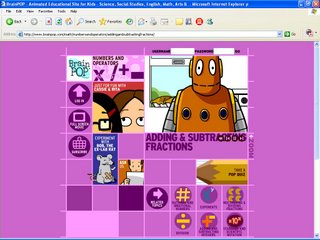No matter what industry you work in…banking, manufacturing, insurance, retail...there is compliance training that must be developed by instructional designers and taken by employees. Typically compliance training involves the following design:
page-of-text, page-of-text, page-of-text, painfully-obvious multiple choice question (repeat).
When we ask learners to simply identify an answer from instruction they have seen two or three screens earlier in the e-learning module, we are doing ourselves and our learners a disservice.
Additionally, most compliance-based e-learning courses (or even classroom instruction) are typically a series of DON’Ts.
- Don’t accept deposits from a single customer of over $10,000 in one day without seeking approval
- Don’t pour chemical A and B into the same bucket
- Don’t allow a customer with condition A to purchase policy B
- Don’t dispose of waste without first decontaminating it through process C
This type of training is, well, painful.
An alternative is scenario-based questions and situations. Rather than ask the learner to recall a policy or process, ask them to APPLY the policy. The scenarios don’t need to be long or involved, but they do need to be realistic.
A customer comes to your teller window with a deposit slip for $3,000. You check the records for the day and see that she has already deposited $8,732 in a joint account this morning. Which of the following actions should you take?
Notice how that question requires the learner to think through a situation and adds the twist of the joint account. One reason training fails to change behavior is because we give our learners the simplest, most straightforward assessment questions ever. The reasoning seems to be “we don’t want to ‘trick’ them.” Unfortunately, “real life” tricks them all the time that is one reason policies and procedures aren’t always followed.
Our job is to prepare the employee for the tricks. We must provide examples of the types of tricks they will actually encounter. We must create instruction that helps them deal with the situation. In real life, a teller is rarely asked to state verbatim the policy on large deposits to a customer; rather he or she is asked to APPLY the policy on large deposits to particular situation. Wouldn’t it be great if training helped employees prepare for the situations they face every day on the job?
Also, if using e-learning, let’s take advantage of its ability to deliver small increments of instruction.
Every day when an employee logs in, present them with a “situation of the day” e-learning module. This e-learning module would present the employee with a short scenario based on one or two compliance policies. The employee then needs to work through the module before starting the day.
In ten minutes, the employee reads the scenario, thinks of the policy and applys it to the real life situation. Feedback is given as to whether or not the policy was applied properly, if not, the next day the employee is confronted with a different scenario but same policy. If the employee correctly applied the policy, they are given a new one the enxt day. This would happen every day.
No more cramming for a compliance training program (or getting the answers from a co-worker...I got news...they've even figured out the "randomized question" functionality of most compliance courses, people are smart at working around systems). Daily the employee would be reminded of policies and practices. Having a "Daily Scenario" shows management’s commitment in ensuring compliance with governmental and company-wide policies.
This approach to compliance training would be far more effective than our current models.
My colleague
Will Thalheimer has done a whitepaper on this topic called
Simulation-Like Questions: How and Why to Write Them. It is available from his
catalog of whitepapers.
He has also written a blog article about assessments which is relevant
Assessment Mistakes by E-Learning Developers.
Next time you think about designing a compliance course, reconsider the traditonal design and delivery of the course. Force learners to actually think about applying the compliance policies to their daily practices.
__
Recommended Games and GadgetsRecommended BooksContent Guide


























